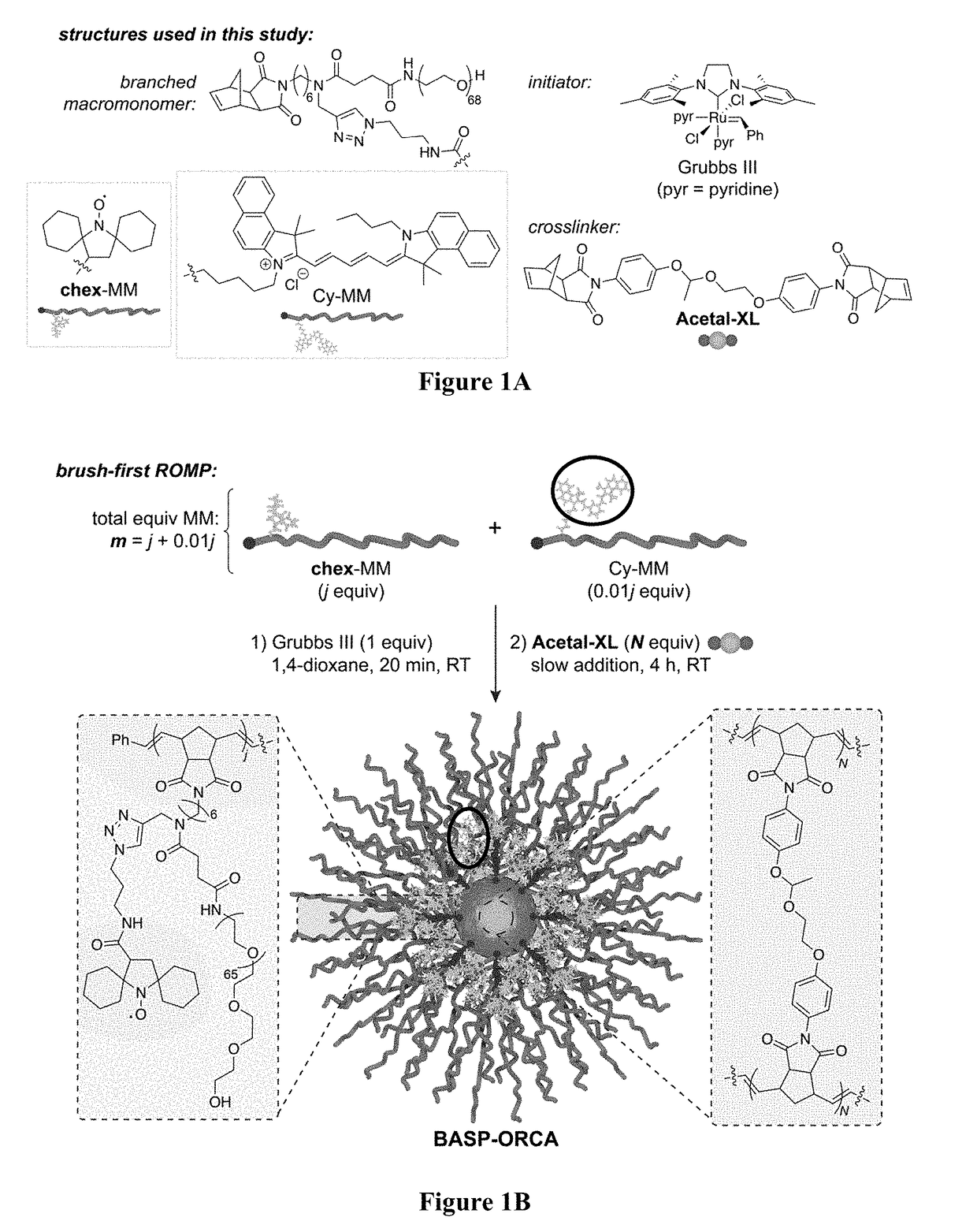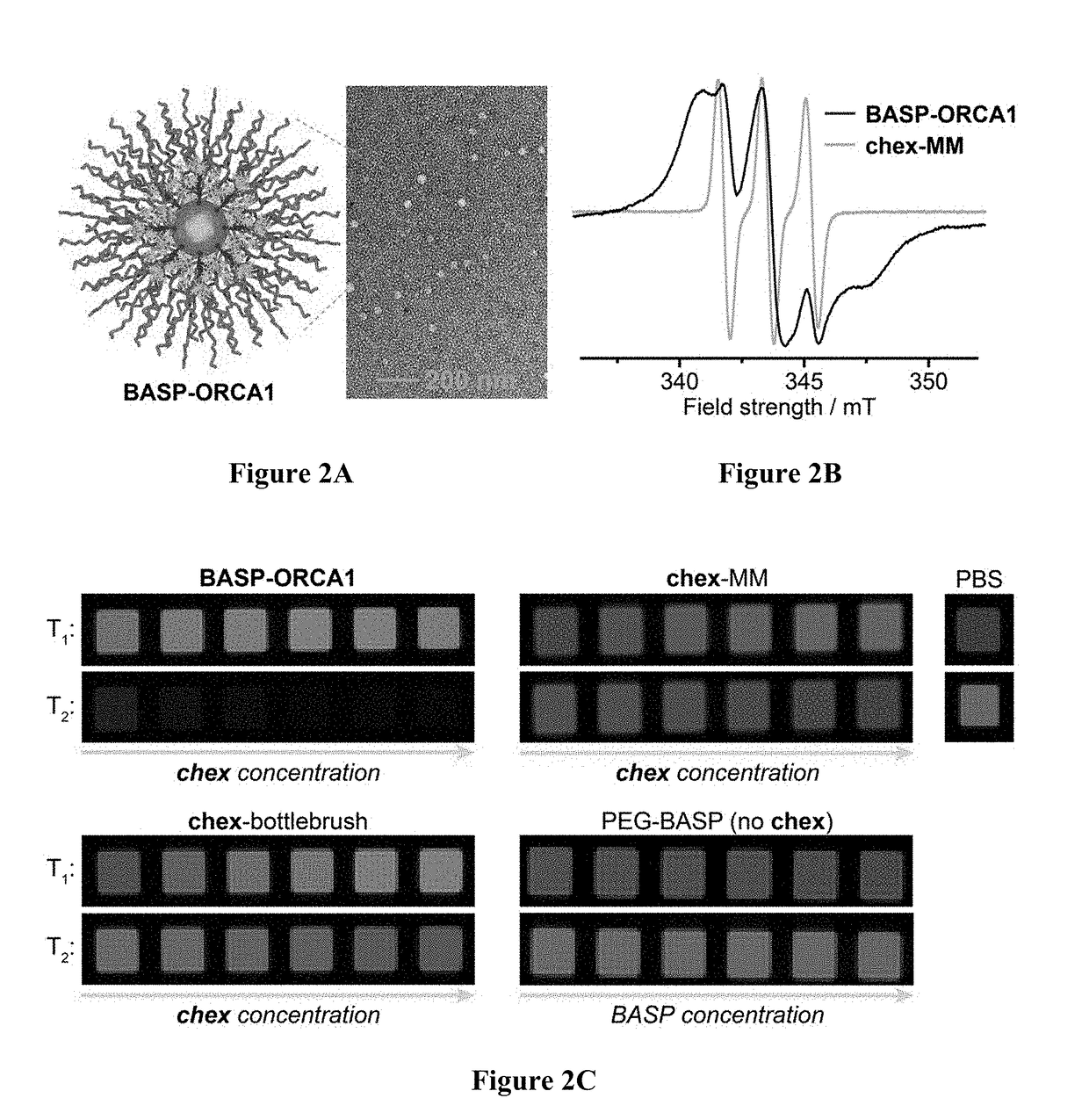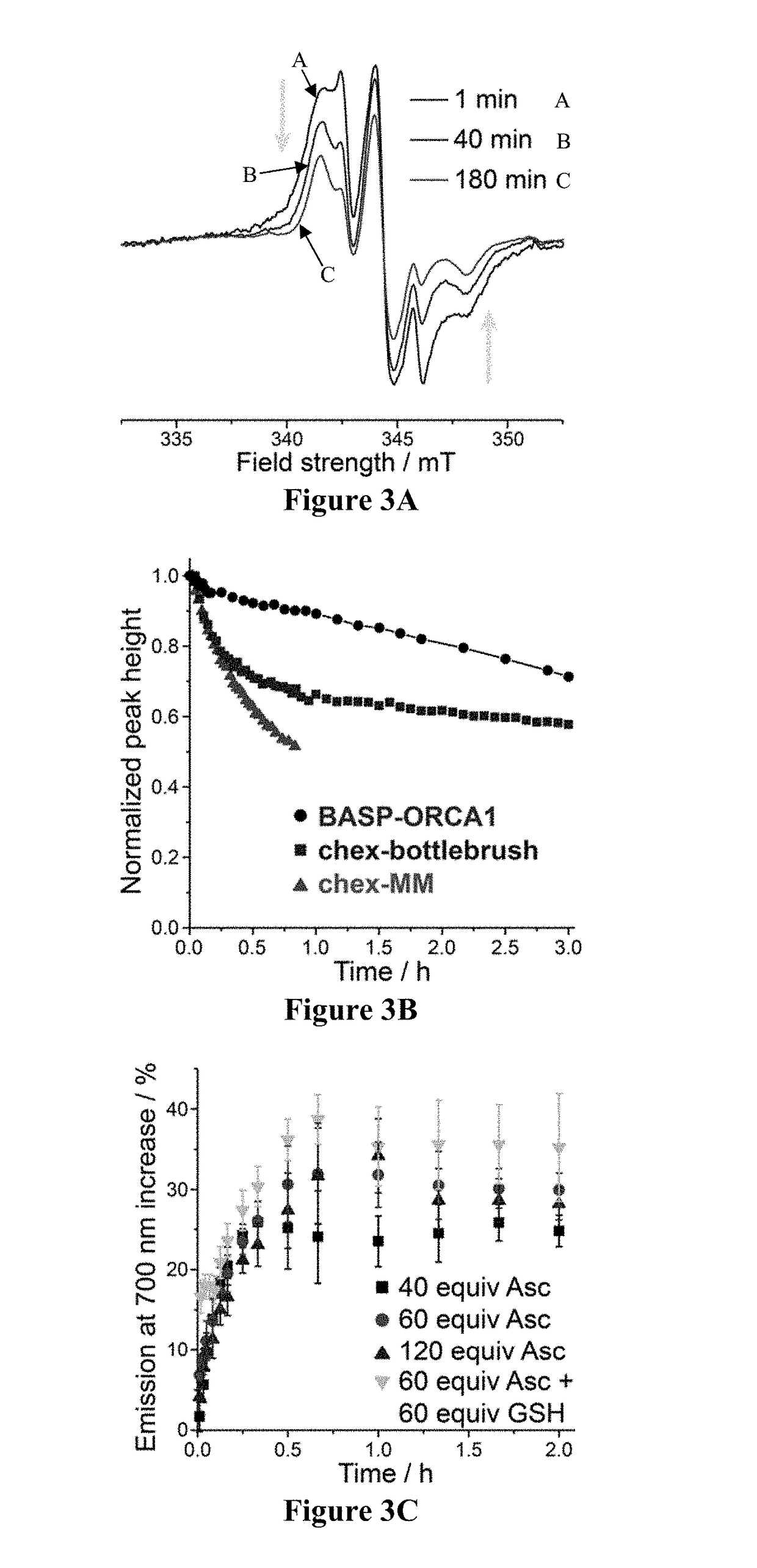Brush-arm star polymer imaging agents and uses thereof
a polymer imaging agent and polymer technology, applied in the field of brush-arm star polymer imaging agents, can solve the problems of limiting the clinical feasibility of nitroxide orcas and ineffectiveness as contrast agents, and achieve the effects of enhanced permeation and retention effect, long-term in vivo, and high metabolic antioxidants
- Summary
- Abstract
- Description
- Claims
- Application Information
AI Technical Summary
Benefits of technology
Problems solved by technology
Method used
Image
Examples
examples
[0212]In order that the invention described herein may be more fully understood, the following examples are set forth. The examples described in this application are offered to illustrate the methods, compositions, and systems provided herein and are not to be construed in any way as limiting their scope.
BASP-ORCA Design and Synthesis
[0213]One of the most common ways to increase the relaxivity of MRI contrast agents (including nitroxides) involves attaching them to a rigid macromolecular scaffold. For example, Rajca et al., appended a spirocyclohexyl nitroxide derivative (“chex”)69 to the surface of dendrimers to produce chex-dendrimer ORCAs where the per-chex r1 was 0.42 mM−1s−1 compared to r1=0.14 mM−1s−1 for the model nitroxide 3-carboxy-2,2,5,5-tetramethyl-1-pyrrolidinyloxy (3-CP). In anotherstudy, chex was appended to the core of PEGylated branched-bottlebrush polymers.70 The resulting polymers had a per-chex r1 of 0.32 mM−1s−1, which was approximately 50% greater than the chex...
PUM
| Property | Measurement | Unit |
|---|---|---|
| size | aaaaa | aaaaa |
| molecular weight | aaaaa | aaaaa |
| molecular weight | aaaaa | aaaaa |
Abstract
Description
Claims
Application Information
 Login to View More
Login to View More - R&D
- Intellectual Property
- Life Sciences
- Materials
- Tech Scout
- Unparalleled Data Quality
- Higher Quality Content
- 60% Fewer Hallucinations
Browse by: Latest US Patents, China's latest patents, Technical Efficacy Thesaurus, Application Domain, Technology Topic, Popular Technical Reports.
© 2025 PatSnap. All rights reserved.Legal|Privacy policy|Modern Slavery Act Transparency Statement|Sitemap|About US| Contact US: help@patsnap.com



